ZTE Axon Mini review
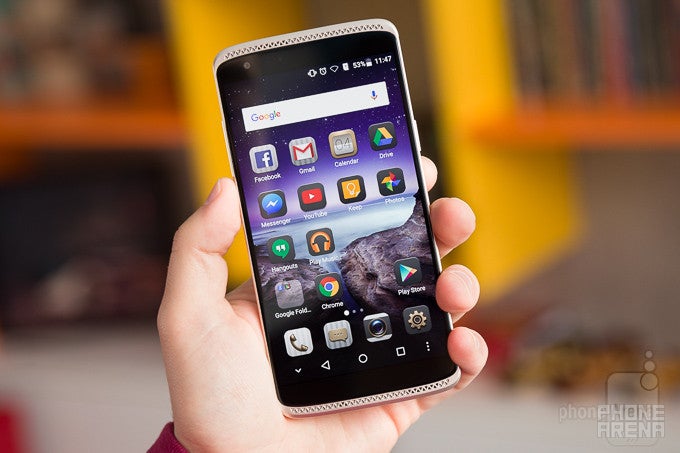
Introduction
Last year’s ZTE Axon and Axon Pro were a delightful surprise – nicely spec’d out smartphones with vanilla Android on board all at very competitive price points. A couple of months ago, the company launched the Axon Mini. Not to be mistaken with a miniature version of the Axon Pro, this handset sits somewhere in the upper-midrange smartphone sector, with a middle-of-the-road processor and exotic features such as a fingerprint scanner and Force Touch screen. Last, but most certainly not least, the stock Android experience has been replaced by a complete re-skin with lots of new features, named MiFavor UI.
The Axon Mini isn't sold in the US, and most probably won't be. It's meant for the Asian markets, but daring tech lovers can still buy and import it from 3rd party websites. Prices vary, generally hovering around the $400 mark, but mind you, that's before shipping and tax. So, let’s see if what this smartphone has in stock is worth the trouble!
In the box:
- ZTE Axon Mini
- microUSB data cable
- Wall charger
- In-ear headphones
- Plastic back cover
- Quick start guide
- SIM ejector tool
Design
Smaller, but still shiny
The ZTE Axon Mini certainly doesn’t look or feel like anything short of a well-made smartphone. Its back is covered in metal, save for a couple of faux leather strips nested at the top and bottom the panel, giving it a distinct touch. On the front, the display’s glass has more of an “island” look to it, as it doesn’t stretch to the very ends of the phone, but rounds off and stops just before the top and bottom bezels. In these spots, the uncovered metal body is engraved with symmetrical speaker grilles, bearing the Axon signature triangular patterns. These are not front-firing stereo speakers — the bottom grille holds a single driver, while the top one is reserved for the earpiece.
In terms of weight and ergonomics, we certainly like how the Axon Mini handles. Its power button is nested on the right, above the phone’s center and our fingers had no trouble finding it in any situation. The volume rocker is not hard to reach and operate, thanks to the handset’s rather compact size, but we found it to be a bit too high for our liking. The power and volume buttons all have a reassuring click to them, but an annoying wobble, too.
Display
A subdued AMOLED panel
The Axon Mini sports a 5.2-inch AMOLED display with a 1080 x 1920 pixel resolution. This gives it a pretty sharp picture with a pixel density of 424 PPI. ZTE did a great job at subduing the oversaturation and punchiness that the AMOLED panels are known for. The display’s settings hold three color modes, named “Natural”, “Colorful”, and “Gorgeous”. They are basically three stages of color saturation, starting from a tame one to full-on vivid and overblown.
The screen’s greens and reds are noticeably not on point and its color temperature measures at 8,108 K. That’s quite far off from the reference value of 6,500 K, and we did perceive the display as noticeably cold, sucking the life out of some colors.
The viewing angles are excellent, with minimum color distortion present when we look at the screen from the sides. Its maximum brightness measures at 343 nits, which doesn’t sound great on paper, but we had no issue operating the smartphone on a sunny day. The minimum it would go to is 5 nits, which is OK, but not great for nighttime usage.
Interface and functionality
MiFavor is a letdown
There’s no way around it – we really dislike the MiFavor interface, both in look and function. The interface offers 4 different icon packs right from the box, but we found the pictures to be bland and confusing, making it hard for us to quickly find the apps we are looking for. 3rd party app icons get put inside frames, styled accordingly to the current icon pack of choice. Said frames, however, come up with a random color, or covered in black and grey stripes. These change by themselves all the time for no apparent reason.
In terms of operation, the interface is laggy. There are a lot of unpleasant tear-ups, most prominent when unlocking the phone, and an ever-present delay in response to user input, which is most noticeable when typing on the keyboard. The phone’s fingerprint reader often takes quite a while to react. If the reading was wrong (and it often is), the user needs to lift their finger and place it again, often resulting in another awkwardly long wait time before we know whether the unlock attempt was successful or not.
The Axon Mini’s Force Touch works pretty similar to how 3D Touch on the iPhone 6s functions, at least in theory. Certain stock app icons will show a contextual menu when they are pressed on, the gallery will give you a larger view of a picture, and scrolling through fullscreen pictures or fast-forwarding through videos can be done by pressing on one of the display’s sides. There’s no Force Touch functionality inside the stock email app, however. As far as the actual usability of the feature – we have to say, it feels very unnatural, due to a combination of the aforementioned lag and the vibrational feedback the phone gives off when it registers a press. It just feels, pardon the pun, forced – as if we are battling with the device to squeeze out that contextual menu. One can certainly learn to use it, however, and we found it to be most useful when we want to start the camera app with a certain mode engaged (emergency selfie!).
Keeping up with modern trends, the MiFavor interface has a MiAssistant guard app, which gives the user control over app permissions, junk and antivirus scanners, and keeps rogue processes at bay. It’s a well-made piece of software, which actually has a working whitelist and we had no issue setting it up so that our chat notifications would always come on time, while unneeded apps’ processes would be decimated and not waste any precious battery.
There is also something to be said about the Axon Mini’s settings menu. It is divided in two tabs – “Common”, which houses the sub-menus that one is most often to look for on an Android handset, and “All”, which is home to most of the phone’s settings arranged in a rather garbled and confusing manner. We said “most” for a reason — for example, you can’t change the homescreen’s wallpaper from anywhere in Settings. This can only be changed from a context menu, which can be found next to the software navigation buttons when the user is viewing a home screen. The lock screen is changed in a similar manner – one needs to be looking at the actual lock screen, which has a pull-up menu from the bottom. Keeping in tone with the overall feel of the MiFavor UI, this is just irrational, and we have to admit – we had some trouble finding out how to change the pictures on the lockscreen.
The interface also features an abundance of unlocking methods – iris-scanning via the frontal camera, voice unlock, fingerprint sensor, and the usual PIN or password choices. The first two are the most clunky and unreliable – it just feels as if ZTE threw a lot of features in there, but perfected none.
System performance
The ZTE Axon Mini is equipped with a Qualcomm Snapdragon 616 SoC and 3 GB of RAM. Playing graphic-intensive games on the device can be accompanied by a frame-drop, so trimming out the extra details from the games’ settings, if possible, is often desirable. Commendably, the phone didn’t get hot when playing demanding games, such as Godfire or Hitman: Sniper, and were able to squeeze out solid and pleasureful play sessions with it as a gaming device.
The Axon Mini’s internal storage is 32 GB, with 24.5 GB actually available to the user. That’s more than enough storage for the non-demanding user, but if it runs out – there’s a microSD card slot for expansion of up to 128 extra GB.
Internet and connectivity
The Axon Mini supports high-speed 4G LTE over bands 1, 3, 7, 8, 12, 17, 20, some of which are covered by AT&T and T-Mobile, but only in limited regions.
The phone’s stock browser is not among the best, as it didn’t work well with heavy websites, but we encountered no issues working with Chrome. Using Google’s browser, the Axon Mini is a pretty stable and reliable Internet-browsing device. The screen’s crispness naturally lends itself well to text-heavy content, while the 5.2-inch display makes it easy to navigate big websites.
Other connectivity includes Bluetooth 4.0 and, naturally, Wi-Fi 802.11 b, g, n, n 5GHz, ac.
Camera
Needs light
The Axon Mini’s 13 MP main camera produces grainy shots with accurate, albeit slightly washed-out colors most of the time. Looking at a 100% crop of a picture taken with the phone reveals a lot of sharp-looking noise. The camera also struggles quite a bit when there is the slightest hint of dynamics in a scene. Try to get a shot that contains both sunlit objects and natural shadows, and you will get burned highlights to the point that the objects become invisible, or very dark shadows. So, an even lighting is required whenever you are trying to take a photo. As a result of all of this, the pictures often end up being overly dark, bland, or lifeless.
The phone’s HDR mode is capable of making dynamic shots better. Sometimes, it will look fake or filterish (samples 10 HDR and 22 HDR), while at other times it will end up looking just right against all odds (samples 8 HDR, 12 HDR, 16 HDR). It’s a bit slow to process a photo and it can produce some blurry images, so steady hands are required!
During nighttime, however, it seems nothing can be done to battle the blurs. When the surroundings get dark, the camera struggles with maintaining focus, while long shutter speeds result in messy photos.
An elaborate Manual mode is available, offering controls for shutter speed, ISO, fine-tuning the white balance, and exposure compensation. In terms of options available, it’s on-par with the best Manual modes out there, and we like the fact that the camera reacts instantly to us manipulating the sliders — we’ve seen some more expensive devices show a delay when we try to set the manual focus, for example. The only beef we have with this mode is that its settings are a bit tough to access, requiring a precise tap on a small button, and then the fact that the sliders take up more than half of the viewfinder.
There’s also a Panorama mode, which takes 360-degree panoramas with pretty good stitching, but some visible blurring; a document-shooting mode, capable of straightening our shots of papers and whiteboards, which you’ve done at an angle; and your run-of-the-mill filters and beauty modes.
The selfie camera is an 8 MP snapper and produces ok-ish images. There is a lot of grain to be seen when zoomed and, when the lighting is unfavorable, digital noise is easily seen. You won’t be taking the perfect selfie with this one, but for the most part – the details are good enough for a selfie enthusiast’s social media sharing needs.
Clips taken with the Axon Mini’s camera suffer from the same issues with high-contrast scenes that the pictures do. That aside, the videos are nicely detailed, show accurate, lively colors, and the continuous autofocus works great – it’s quick and on point.
Multimedia
The AMOLED screen on the Axon Mini lends itself well for picture and clip viewing. It’s nicely detailed, shows contrasts well, and has the capability to overblow and oversaturate colors, if that’s what you desire. We had no trouble doing our daily YouTube channel surfing with it.
The Axon Mini’s loudspeaker is not particularly deep or clean, but manages to produce a somewhat passable sound picture. It will rarely distort at loud volumes. It's also a bit weak.
Call Quality
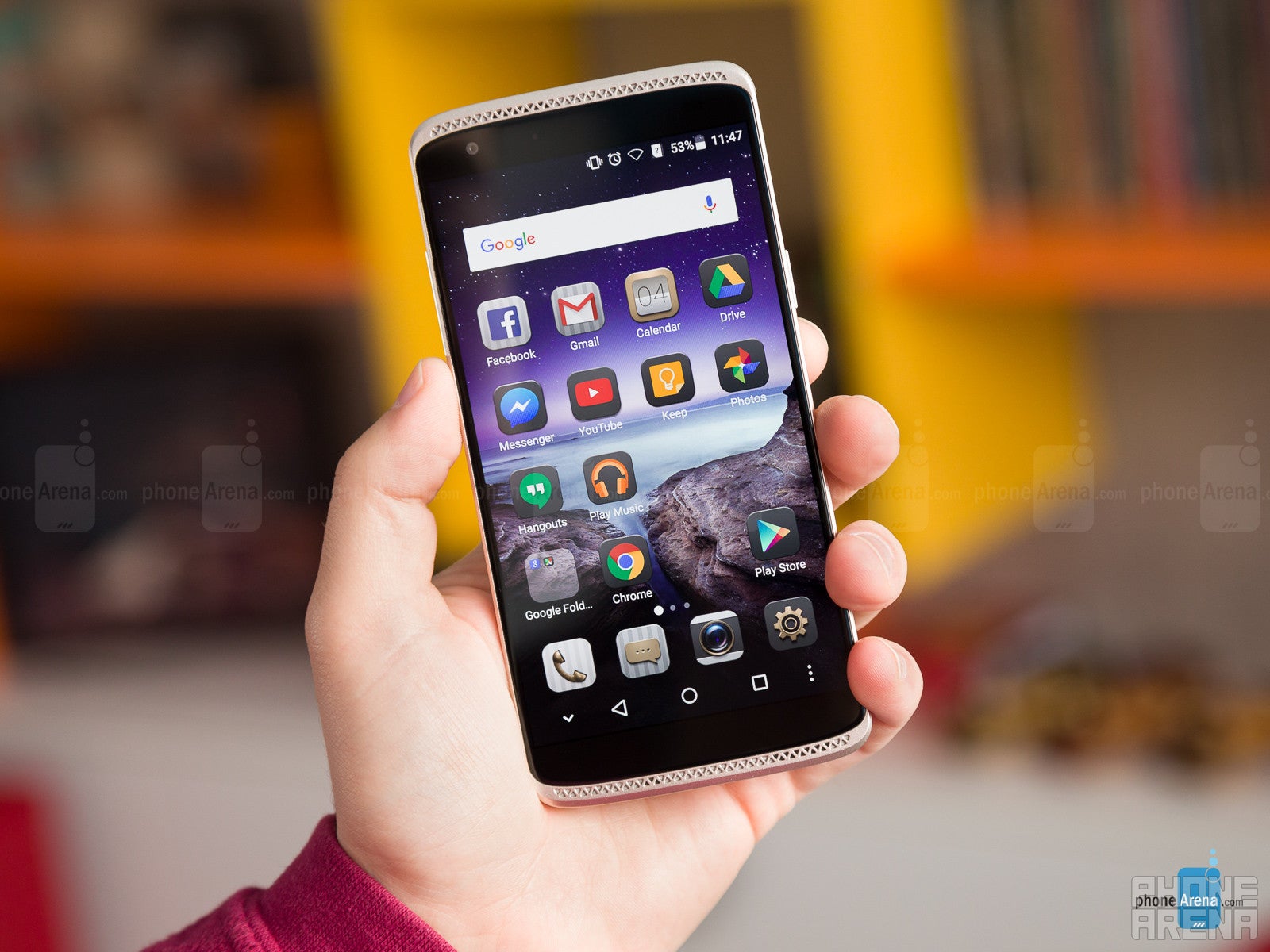
The other party in our calls was also able to get our voice loud and clear, without issue understanding us, even when we were walking the busy streets.
Battery life
Beyond a full day
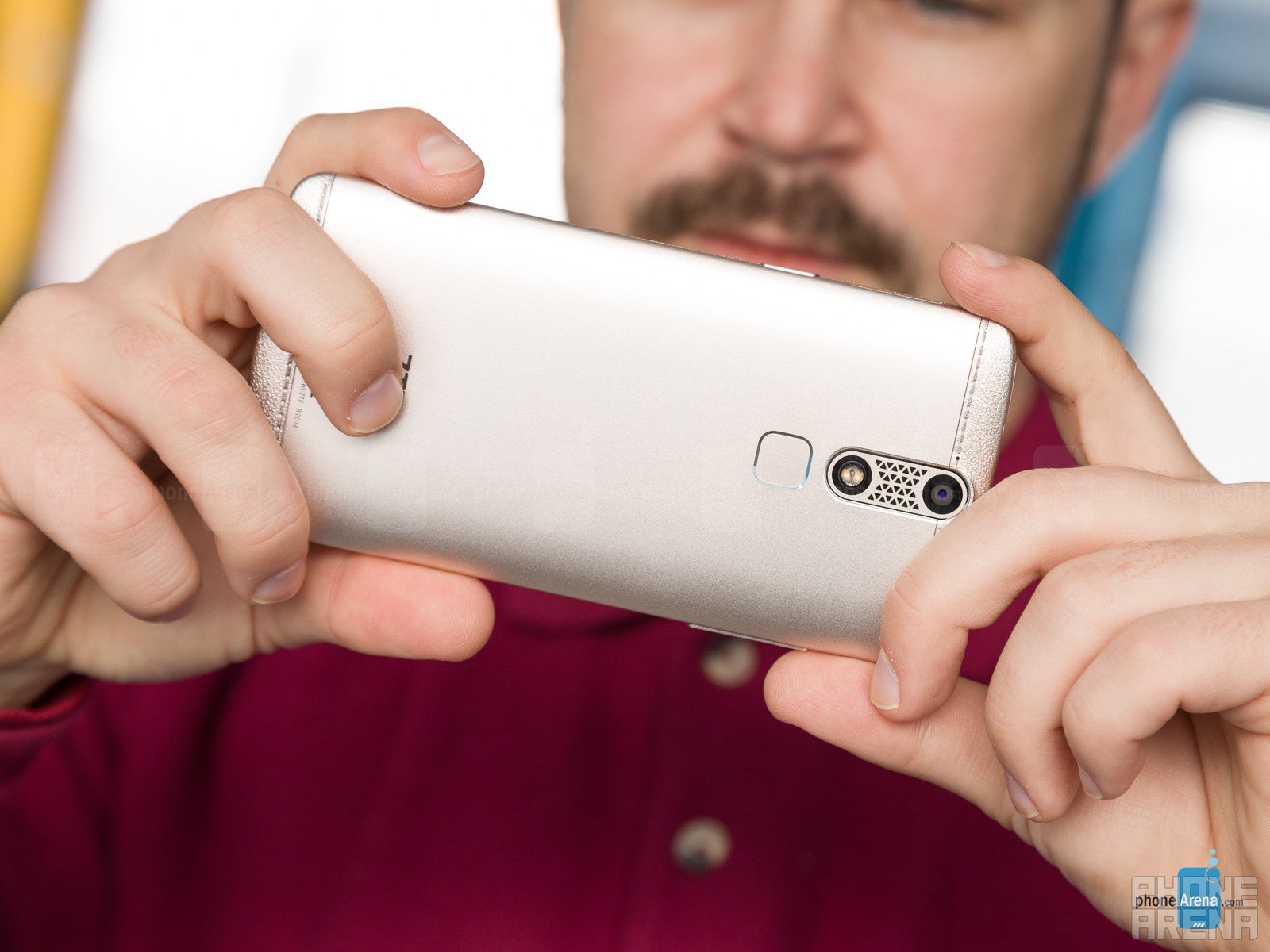
On our battery test, the device lasted for about 7 hours, which goes to show that even if you spend most of the day with the Axon Mini in hand, you will still be able to get quite a bit of use from it before having it die out on you.
Conclusion
As mentioned, the Axon Mini isn't sold in the USA. You can still buy it from 3rd party websites for around $400 before tax and shipping, but be sure to check what cellular bands the model you are buying supports.
If you’ve felt that we’ve been too critical of the smartphone thus far – it is this price point that caused us to be. Well, that and the fact that we really liked the vanilla Android-toting Axon Pro. The Mini packs a lot of tech, impressive on paper but not so much in real life. Force Touch – great, but unresponsive and unnatural-feeling; fingerprint scanner – awesome, but not quick or reliable; iris scanner and voice unlock – clunky and impractical; 13 MP camera sounds great, but performs worse than some cheaper handsets we’ve reviewed. It feels more like a tech fan’s toy than an actual, fleshed out upper-midrange smartphone.
All that aside, it does look and feel good in the hand, it’s compact and ergonomic, has good call quality, and even some nice ideas throughout its custom Android skin. But not one of these ideas strikes us as completed and perfected. Rather, the MiFavor interface is, at this point, so undercooked that it left a bad taste in our mouths.
In other words – go for the Axon ($330), or Axon Pro ($400), both of which are sold in the US. If you want to test an Android smartphone with Force Touch just out of curiosity, this is not the one to sate that hunger.
Follow us on Google News
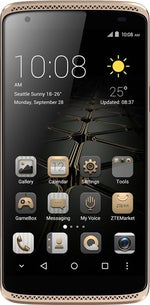
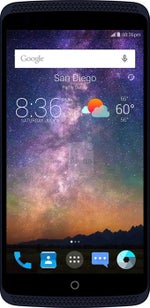
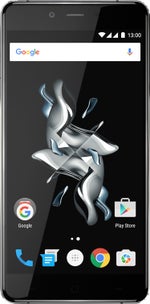
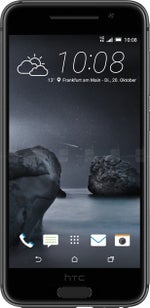




























Things that are NOT allowed:
To help keep our community safe and free from spam, we apply temporary limits to newly created accounts: